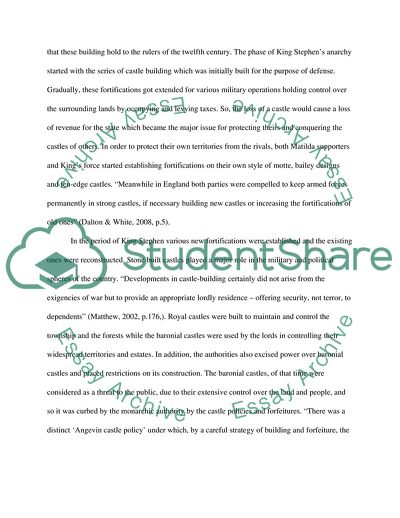Cite this document
(The Impact of Castles During the Reign of King Stephen Essay Example | Topics and Well Written Essays - 1750 words, n.d.)
The Impact of Castles During the Reign of King Stephen Essay Example | Topics and Well Written Essays - 1750 words. https://studentshare.org/history/1791763-evaluate-the-military-political-and-social-importance-of-the-castle-in-king-stephens-reign
The Impact of Castles During the Reign of King Stephen Essay Example | Topics and Well Written Essays - 1750 words. https://studentshare.org/history/1791763-evaluate-the-military-political-and-social-importance-of-the-castle-in-king-stephens-reign
(The Impact of Castles During the Reign of King Stephen Essay Example | Topics and Well Written Essays - 1750 Words)
The Impact of Castles During the Reign of King Stephen Essay Example | Topics and Well Written Essays - 1750 Words. https://studentshare.org/history/1791763-evaluate-the-military-political-and-social-importance-of-the-castle-in-king-stephens-reign.
The Impact of Castles During the Reign of King Stephen Essay Example | Topics and Well Written Essays - 1750 Words. https://studentshare.org/history/1791763-evaluate-the-military-political-and-social-importance-of-the-castle-in-king-stephens-reign.
“The Impact of Castles During the Reign of King Stephen Essay Example | Topics and Well Written Essays - 1750 Words”. https://studentshare.org/history/1791763-evaluate-the-military-political-and-social-importance-of-the-castle-in-king-stephens-reign.


